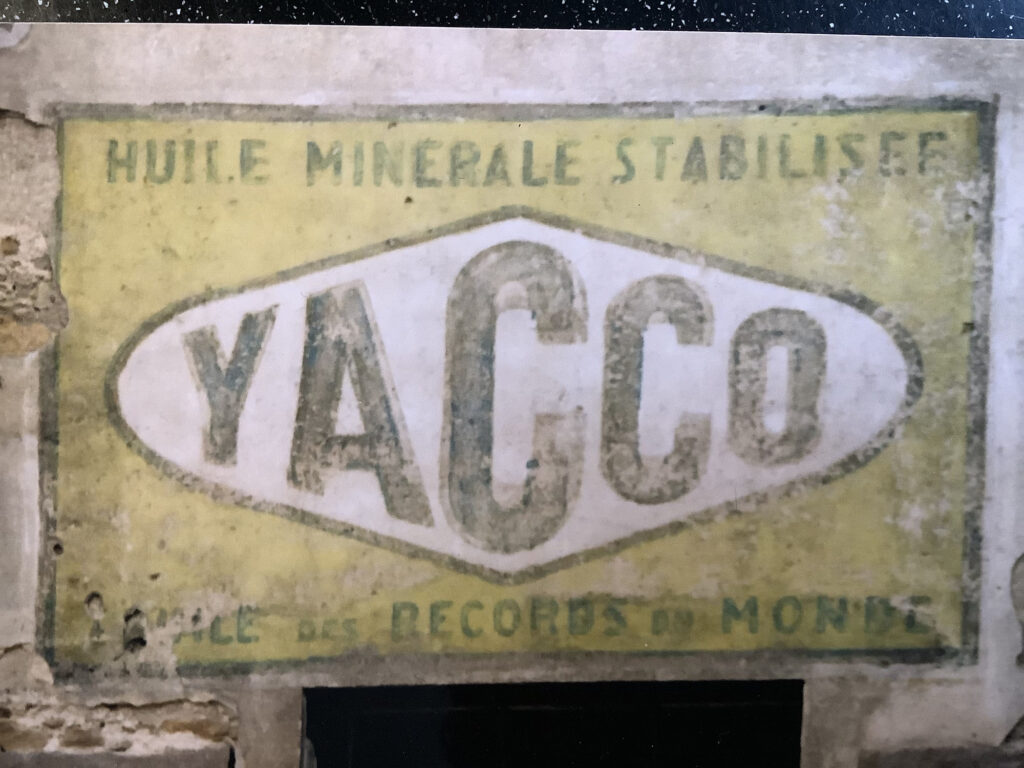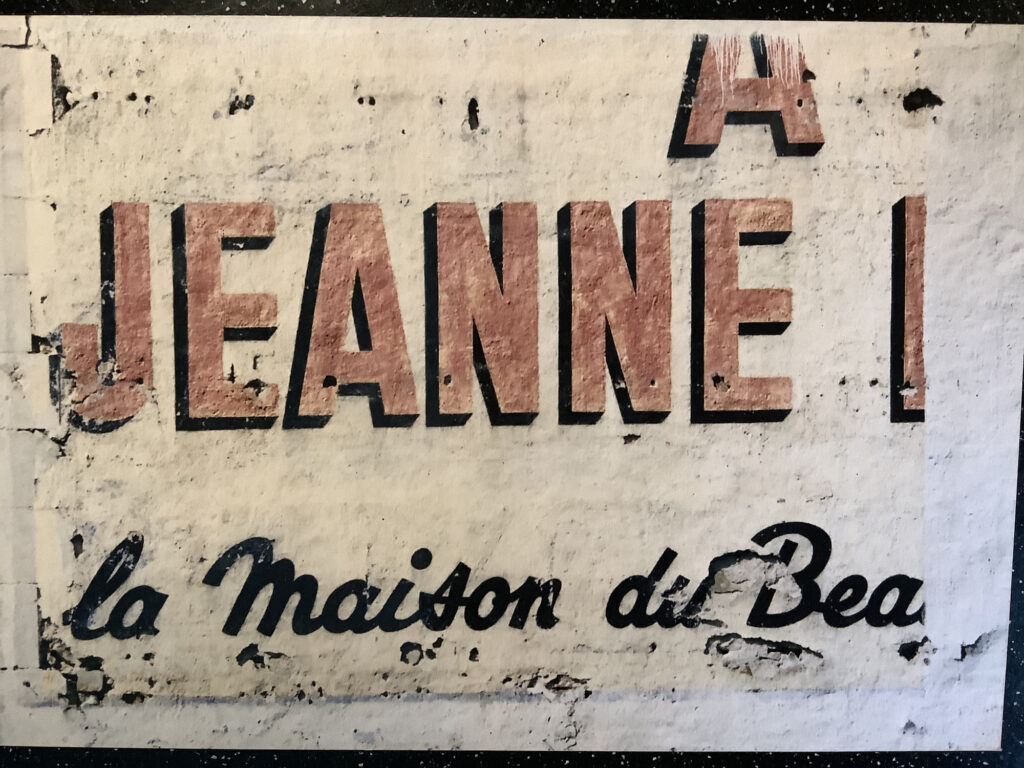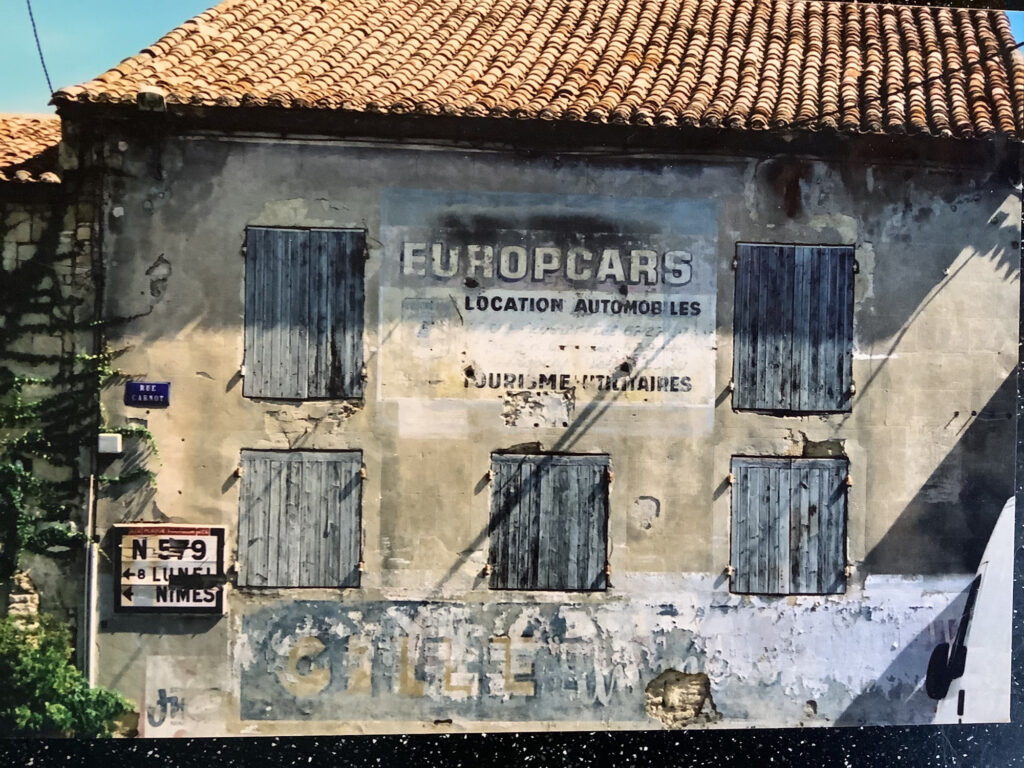12 Apr 2024
Karen Stamper’s Ghost Sign-Inspired Collages
I have always been interested in the way that ghost signs feed others’ creative pursuits, and in particular their interpretation by artists. I was therefore delighted to receive correpondence from Karen Stamper, who has kindly shared her work in collage, and some of the French ghost signs that inspired it.
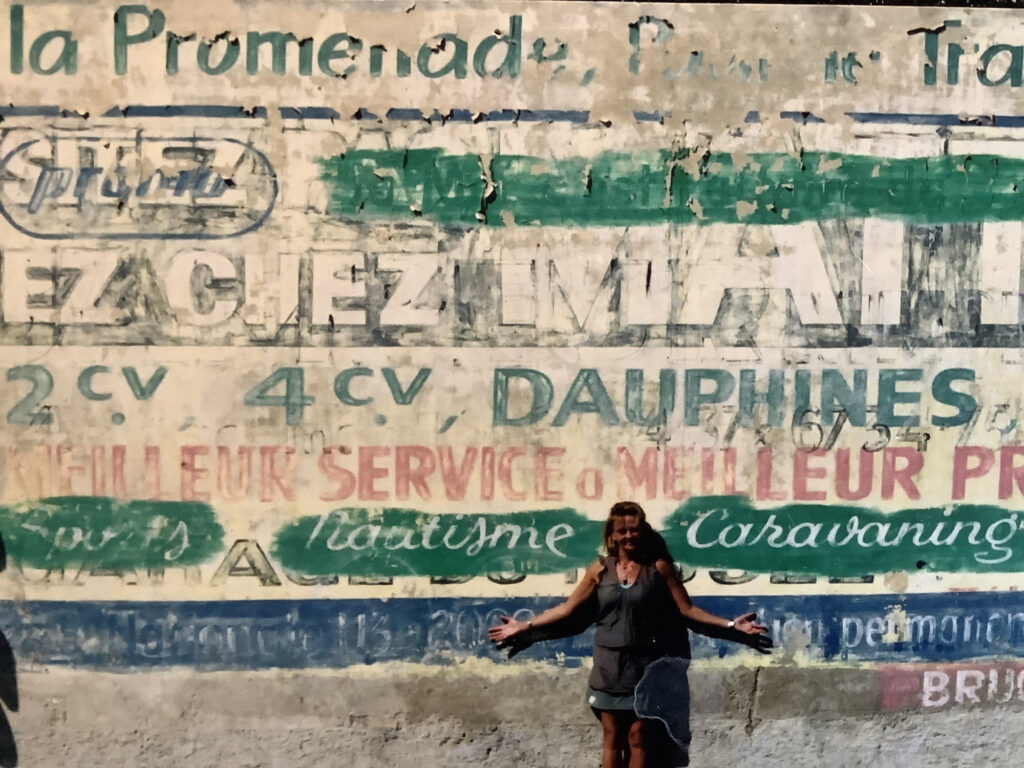
I come from East Yorkshire and I went to art college at Bradford. It was there, when studying silkscreen printing, that I received a travel scholarship and went to Amsterdam and Paris, and saw Matisse’s cut-outs for the first time. I loved the flat colours and the pinholes along the edges of his hand painted paper sheets, and they set me off on a lifetime of collage.
In the summertime I would hitch hike to the south of France to sell ice creams on the beach as a summer job. Coming from Hull, I was I was completely seduced by the colours and light, and of course people, food and the crumbling old towns and villages. I continued to travel, and work, in many Mediterranean countries before settling in New Zealand. It was there I started to work with paper collage for editorial work in magazines and book covers.
After ten years of travelling I returned to the UK and eventually started running art and yoga holidays in the south of France. I would rent a large house in Moux, near Carcassonne, and another in Roujan, near Pezenas. I spent a lot of time driving around this area and fell in love with the ghost signs that I would see in tiny villages. Often the signs were peeling and flaking, but still legible. Many times I screeched the car to a halt and grabbed my old SLR camera to take pictures of LU biscuit signs.

I always travel with a sketchbook, and at this time I would sketch in pen and line, often with some collage papers stuck in as a starting point. It wasn’t until I was back in my studio that I could really lay all my papers and start to compose.
Back in the UK, in the winter time, I began to develop my way of working using all the paper that I had collected, from markets and vide grenier [car boot/garage sales] in France. I collected shopping lists, old envelopes and stamps, handwritten letters and house sale papers, wine labels, billboard adverts and food paper packaging.
I would lay out my treasure trove of papers and my printed photographs of ghost signs. From here I would often spend a couple of days shuffling bits of paper to find compositions that would work together. I was also drawn to the dramatic blue sky shapes between buildings, the negative spaces, and I would photograph these along with details such as lamp posts, windows with shutters, rooftops, chimneys and washing on the line.
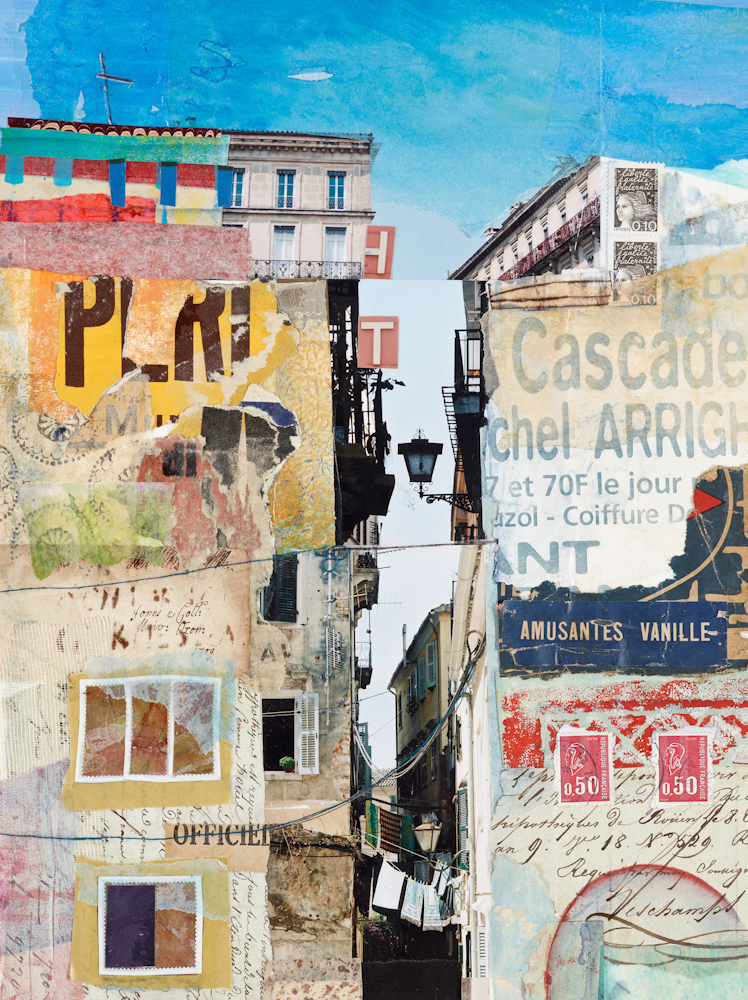
The blue sky shapes were often a starting point and the street would spread out from there. This means that the viewer is faced with two flat ends of buildings where I could collage my ghost signs and collection of papers from that town. Slowly I would begin to stick pieces down using an acrylic medium. Sometimes I would distress the photograph a little more, by creasing it or sanding it slightly.
Postage stamps, sugar cube wrapping and tags from teabags are often used as windows. Occasionally I used scrim to have a little texture. This work is purely collage with no drawing. I used my scraps of paper as a painter would use blobs of paint. There is some line but it is usually handwriting from long ago, handwritten letters or type from newspapers and packaging.
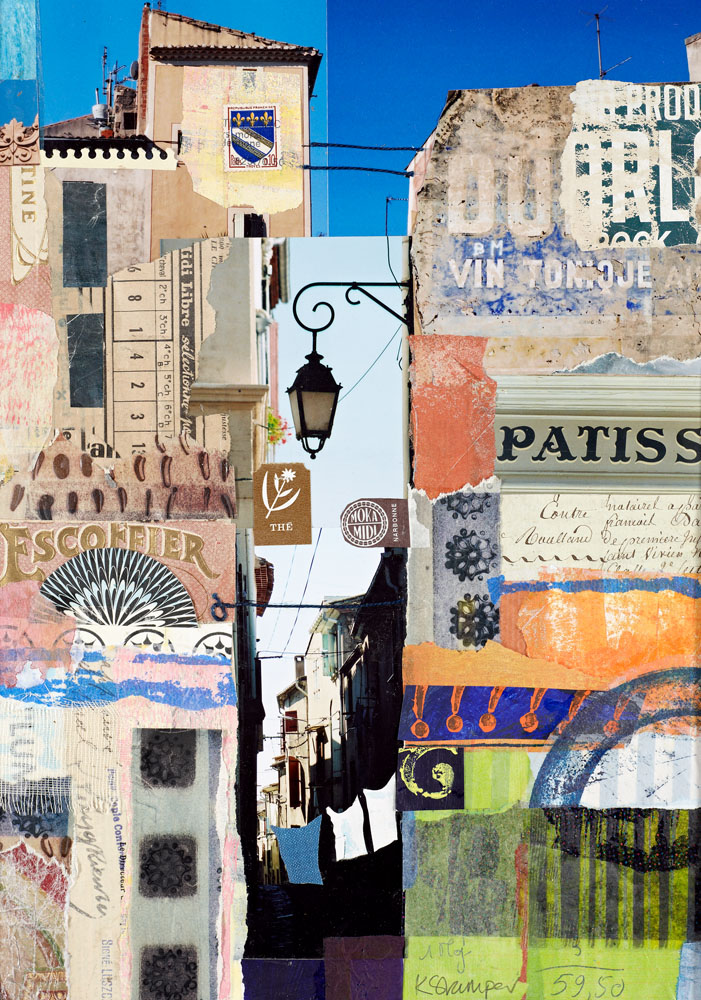
These paper colleges were very popular as they reminded people of their holidays wandering through the shady street in the south of France. If some of the papers slightly yellowed over time, this was just part of the aging of the piece of work. I framed them behind glass to protect them and I also made giclee prints which of course will last for longer than any aged paper collage!
As a ‘cut and stick’ artist, I naturally looked at the work of Matisse and Schwitters at this time, but I took most of my inspiration from the streets themselves. Often a small section of faded and peeling wall with a little bit of lettering and maybe a rusty nail was a beautiful abstract in itself.
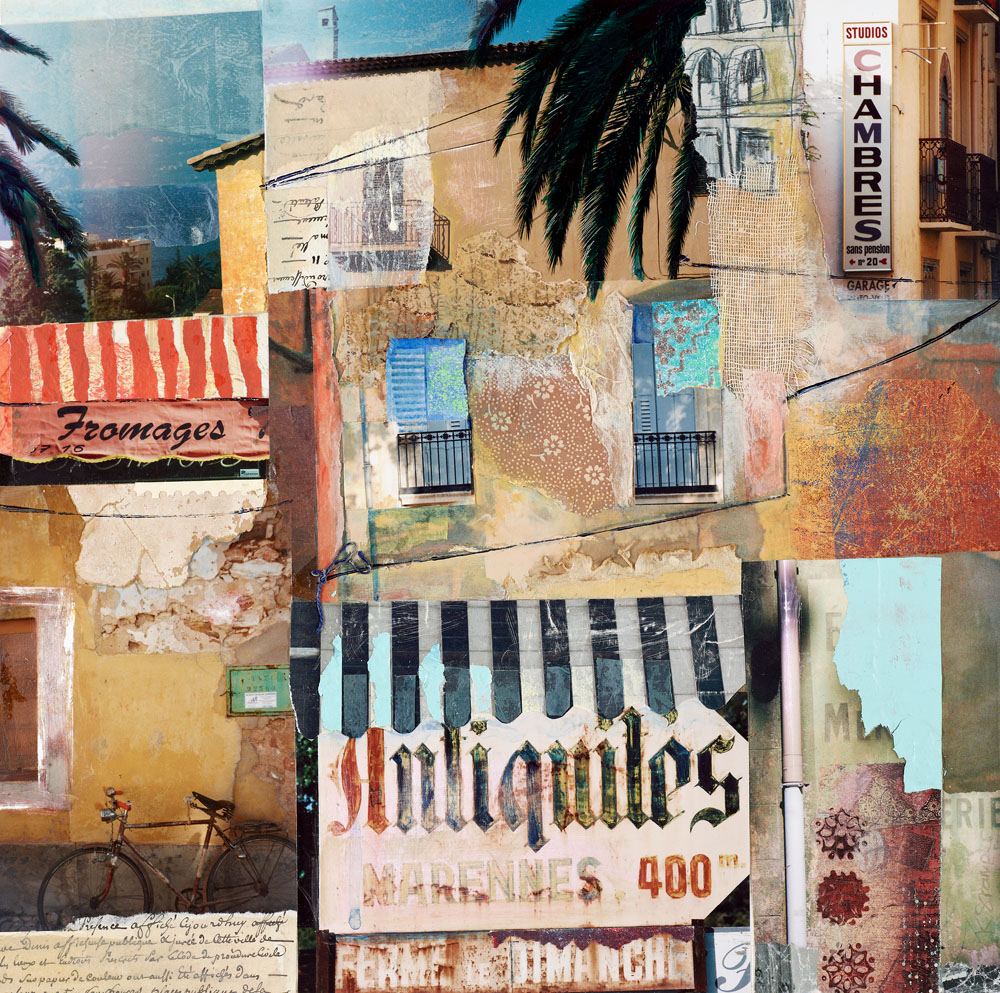
As my collage paintings have developed over the years I have increased their size, and those beautiful tiny bits of papers from my travels are often too small now. I like to keep pushing forward and exploring new ways of working with paper and paint. More recently my subject is harbours, boats and boatyards, and currently I am working building up many layers of paper and paint and then really sanding, peeling and scratching back into the surface—much like the old walls in France.
Written by Karen Stamper
Giclee prints of the pieces shown, and more, can be found on this page of Karen’s website. Karen is also on Instagram as @karen_stamper_collage.
Karen’s French Ghost Signs
Here are a selection of Karen’s photos of ghost signs in the south of France. These were mostly taken around Carcassonne and Montpellier over ten years ago, so some may now be lost.
